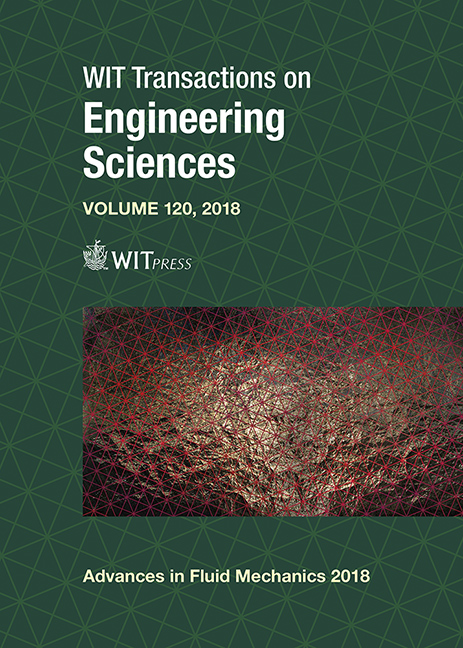EFFECT OF NOZZLES’ CHARACTERISTICS ON PV AEROMECHANICAL SYSTEMS
Price
Free (open access)
Transaction
Volume
120
Pages
7
Page Range
229 - 235
Published
2018
Size
501 kb
Paper DOI
10.2495/AFM180231
Copyright
WIT Press
Author(s)
LIRON SHANI, RONEN S. LAUTMAN, BOAZ NISHRI
Abstract
This paper presents results from a CFD analysis that highlights the effect of nozzles’ characteristics on the performance of PV aeromechanical systems. PV aeromechanical systems enable accurate positioning of thin flexible substrate by creating an air cushion between the substrate and an accurate rigid surface, having bi-directional aeromechanical spring-like behavior. Nozzles can be described as the relation they allow between flow (Q) and pressure drop across them (Δp): Δp ∝ Qn where n depends on the characteristic behavior and (in this work) is between 1 and 2. The characteristic behavior depends on the mechanism by which pressure is reduced. The mechanism can be dominated by inertial effects, by viscous effects, or by a combination of both inertial and viscous effects. It was found that aeromechanical performance is very sensitive to the nozzles’ characteristic. An air cushion with high aeromechanical stiffness and constant flow rate is achieved by combining vacuum nozzles of exponent n=1 and pressure nozzles of exponent n=2.
Keywords
CFD, air floating, non-contact handling, aeromechanical spring





